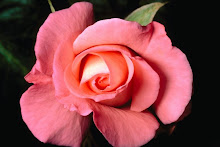Facial Makeups
A plastic art peculiar to the Chinese stage, the facial makeups are various designs of lines and coloured patches painted on the faces of certain operatic characters. They follow traditionally fixed patterns for specific types to highlight the disposition and quality in the personages so that the audience may immediately know whether they are heroes or villains, whether they are kind or treacherous and wicked. The following describes briefly the major categories of facial makeups:
The red face shows bravery, uprightness and loyalty. A typical "red face" is Guan Yu, general of the period of the Three Kingdoms (220-280) , famed for his faithfulness to his Emperor, Liu Bei.
The reddish purple face likewise shows a just and noble character, for instance, Lian Po in the well-known play Jiang Xiang He (The General Reconciled with the Chief Minister), in which General Lian was proud and impetuous and quarrelled with the chief minister to whom he was ultimately reconciled.
The black face indicates either a rough and bold character or an impartial and selfless personality. Typical of the former are General Zhang Fei (of the Romance of the Three Kingdoms) and Li Kui (of Water Margin), and of the latter is Bao Gong (alias Bao Zheng), the semi-legendary fearless and impartial judge of the Song Dynasty.
A green face depicts surly stubbornness, impetuosity and a total lack of self-restraint.
Commonly seen on the stage is the white face for the powerful villain. It highlights all that is bad in human nature: cunning, craftiness, treachery. Typical characters are Cao Cao*, powerful and cruel prime minister in the time of the Three Kingdoms, and Qin Hui, treacherous Song Dynasty prime minister who put the national hero Yue Fei to death.
All the above facial makeups belong to a category of characters collectively called jing--all males with pronounced personal traits.
For the clowns of traditional drama, there is a special makeup called xiaohualian (the petty painted face), i.e., a small patch of chalk on and around the nose to show a mean and secretive character, such as Jiang Gan of the Three Kingdoms who fawned upon Cao Cao.
It is also occasionally painted on a young page or an ordinary workingman, often to enhance his wit, humour or jesting and to enliven up the performance.Another type of players , called "acrobatic clowns" (wuchou), are also touched up with a tiny patch of white on the tip of the nose to show an astute mind, a keen and quick wit. Several of the stage heroes from the novel Water Margin are made up in this way.
The facial makeups date a long time back to the Song (960-1279) and Yuan (1271-1368) dynasties at least. Simple patterns of painted faces are found in tomb murals of that age. During the Ming Dynasty (1368-1644), improvements were made in the skills of drawing and in preparing the paints, leading to the whole set of colourful facial patterns that we see in today's Jingju (Peking Opera).
As to the origin of the facial makeup, it is still largely a matter for conjecture. And there are different theories:
1) li is believed that primitive hunters painted their faces to frighten off the wild beasts, and highwaymen in the old days did the same to hide their identity and also to overawe the wayfarers they were to rob. Either practice may have led to the emergence of dramatic facial makeups.
2) It is thought that the facial makeup owes its origin to the mask. Prince Lanling of the Northern Qi Dynasty (479- 507) was a good fighter but, because of his handsome features, aroused no fear in his enemy. So he had a ferocious-looking mask made and began to wear it into battles. Sure enough, he proved much more formidable and therefore ever-victorious. His followers composed a song to sing of his successes, which developed into a masked dance, showing him storming into the enemy formation. Subsequently, the mask became painted patterns for stage characters.
3) It is held that facial makeups were used for traditional operas simply because they were often presented on open-air stages to large gatherings of noisy crowds, and the characters were made to wear painted facial patterns in order to bring the drama home to the audience.


No comments:
Post a Comment